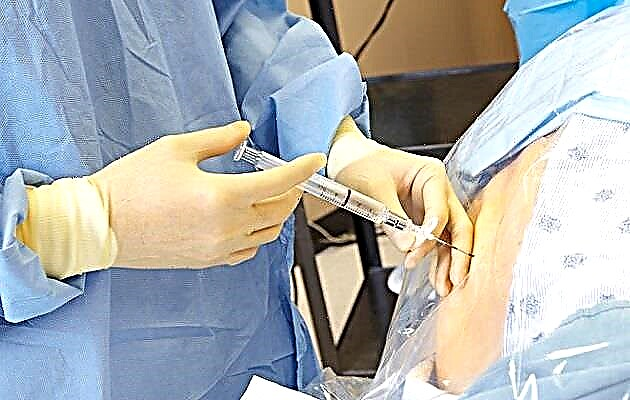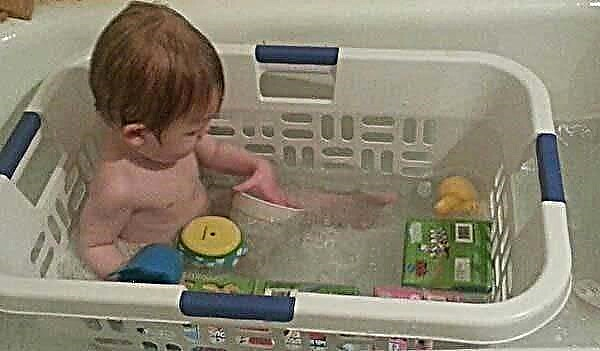After six months, many parents seek to control the mental, physical abilities of the baby. If the child is not sitting at 7 months, it is possible to identify problems requiring medical attention. However, more often than not, the main reasons that prevent children from keeping their backs upright are insufficiently strengthened muscles, the crumbs' unwillingness to sit morally on their own, or excess weight is an obstacle.

The baby does not sit on its own
Dr. Komarovsky warns: vertical movement on two legs has created a human, as a biological subspecies, many problems caused by a serious load on the spine. An early load on the back threatens in the future with various problems (curvatures, radiculitis). If the baby lies down for an extra month and crawls, her spine will be healthier.
Physical skills of a seven month old baby
At the age of seven months, children are able to:
- Sit and crawl. Some kids sit on their own, others need support. Crumbs also crawl in different ways. Many children move on all fours or crawl while lying on their stomachs, and move backwards.
- Hold various objects in your hands, taste, throw, close, open.
- Put a spoon to your mouth, drink from a cup.
- Stand, begin to take the first steps, leaning on a solid object. Stand up by reaching out for the fingers of an adult.
- Recognize adult speech. At the request of the parents, the kids show individual parts of the body, familiar objects. Many new syllables are pronounced meaningfully.
Important! Ligaments and muscles of babies are in the stage of formation, you should ensure the most careful attitude to the baby's body. If the child does not sit down at 7 months, forced sitting threatens with a curvature of the spine, a violation of the development of the pelvic bones. The baby, not ready for the load, does not hold the back, there is a violation of breathing, deformation of the chest.
When the child learns to sit on his own
Based on innate and hereditary skills, children independently take an upright position at 4.5 months or refuse to sit for up to a year. Girls usually sit down earlier than boys. Active and slender children cope faster, relatively plump peers, but there are exceptions.
Norm
According to the regulations, babies start to sit up or get up by 10 months. It is worth enlisting medical help if the baby does not turn from stomach to back by nine months or does not show a desire to sit down. If children at 3-4 months persist in a sitting position, do not support this decision. The baby's spine is not strong enough, an upright position at an early age will cause harm. It is better to lay the baby in a chaise longue cradle - the reclining position will increase the view without harming the spine.

The kid moves independently
Why does the baby not sit at 7 months
If a baby by seven months has not learned to draw his legs on his own or make attempts to sit with support, the forecasts can be disappointing. Delays in the development of children are not uncommon; various factors affect the situation.
If the child is not sitting, deviations are caused by a number of reasons:
- difficult pregnancy (toxicosis, threat of miscarriage, Rh-conflict, intrauterine infections, fetal hypoxia, anemia, prematurity);
- rapid or stimulated childbirth, using forceps, birth trauma to the child;
- baby pathologies (weak muscle corset, genetic disorders: Down syndrome, impaired central nervous system, rickets, hip dysplasia, muscular dystrophy, obesity).
Diseases interfere with the proper development of muscle and bone mass, disrupt physical development. Lack of sitting skills provokes more severe developmental delays. Sometimes the cause is beyond the control of doctors. For example, a 7-month-old child does not sit on his own with latent psychological trauma from a fall, accompanied by severe fear. Fear prevents the urge to sit. Parents should be patient and seek the advice of a pediatric neurologist.
How to help your child learn to sit
Pediatricians advise regular simple procedures:
- Bathe in an adult bath with a retaining ring. Floundering, the baby will work with its legs.
- The best solution for hypo - hypertonicity will be professional back and limb massages.
- Crawling on the stomach strengthens the spine, calves and abs. It is easy to stimulate the baby to move. The ideal option is to offer to touch the toy, providing the heels with support for pushing away, for example, the palm.
- Placing your baby on your stomach frequently will strengthen your back and spine muscles.
- The large mesh of the arena will easily teach the baby to grasp the cells and pull up, which will provide excellent training and muscle strengthening.

Exercises to help build muscle
Important! If the baby does not sit down by itself at 7 months, do not use the kangaroo for more than 30 minutes. Unbearable load will harm the fragile spine. Also, do not carry your child in a stroller. Pediatricians recommend that at the age of seven months provide a firm back, reclining to the "reclining" position.
Massage
A relaxing massage will help warm up the baby's muscles before gymnastics:
- with a light circular motion, adults stroke the back and abdomen of the child;
- grabbing the baby by the heels, rotate the legs like pedals on a bicycle;
- crumbs are massaged along the joints (from the periphery to the center).
Important! For the correct massage, you should consult with a specialist, careless movements can harm the fragile child's body of a boy or girl.
Gymnastic exercises
Simple exercises will help the child sit on their own:
- The baby is laid on his back, his toes are held up to the nose, without bending his knees.
- In the supine position, you need to give the child the index fingers, allowing the child to firmly grasp the adult's hands. Slowly pull the baby up to an upright position: sit down, then smoothly return to the prone position.
- The child's starting position is lying on his stomach. The task of the parent is to help the baby roll over onto his back, return back, pushing the crumbs with the palms of his feet.
- The child is placed between the pillows (or the arms of a second adult). With one hand they hold the child's legs, with the other they hold their palms. The baby is gently rocked in different directions, training the ability to maintain balance.
- An adult sits on the floor, legs wide apart. Places the baby between the legs with his back to him, places a soft toy in front, allowing the baby to grab onto. A little tear off the crumbs from the floor and slowly swing around. This exercise helps to strengthen the muscles of the spine.
- The development of the vestibular apparatus and the strengthening of the baby's back are facilitated by playing a fitball. At the age of 7 months, a ball with a diameter of 65 cm is suitable. Exercise should be done daily, before meals. A diaper is put on the ball, then the baby is laid down with his stomach. Swinging and shaking on the fitball will help your baby sit up faster, raise his shoulders and head.

Gymnastic exercises for the baby
In between teaching exercises, it is advisable to sit the child on the lap, using the fingers for support. The chosen position will help the baby to train muscles and balance, teach him to sit on his own.
Warm baths
Bathing in a voluminous bath with a children's circle will strengthen the muscle corset. The baby's legs and arms are actively working in the water, the back and stomach get stronger. These are the main reasons why the baby after water procedures is more confident in sitting.
Dangerous symptoms that require medical attention
Unwillingness to sit can be a signal of developmental delay. A doctor's consultation will be required in case of insufficient weight, strabismus, hypertonicity or muscle weakness, rolling eyes. The pediatrician will assess the condition of the baby and recommend adequate therapy, explain why certain types of massage and gymnastics are used.
Signs that your baby is ready to sit down
The following indicators indicate the readiness of the child's body for stress:
- the baby raises his head on his own - the neck muscles are strong enough;
- lying on his stomach, the baby is held on his hands - the chest is getting stronger;
- rises, lying on his back, if the parent gives his hands, pulls himself up - an indicator of strong abdominal muscles.
An additional factor that confirms the child's readiness to sit in the seventh month is the unwillingness to lie. Half-sitting, the baby calms down, actively takes an interest in the environment, when trying to put the baby in a crib or stroller, whims and loud protests begin. Several such cases indicate the need to step over to the next stage of development.
Recommendations for parents
For children seeking to stand upright, an uneven surface is preferred. A highchair with a folding back at an angle of 40-45 degrees is suitable. It is a bad idea to take care of a baby too much by depriving him of freedom of action. Many parents also make the mistake of throwing pillows around their baby to avoid injury. Leaning to the sides, the baby trains the muscles, muscles and gains useful experience.

Boy sitting alone
At the stage of growth, the formation of a child's body, the task of parents is to allow the child to develop individually, to control the process and help the baby. If the baby is not sitting, you should not rush things, bring up a champion from the cradle, compare the child's achievements with other children.



